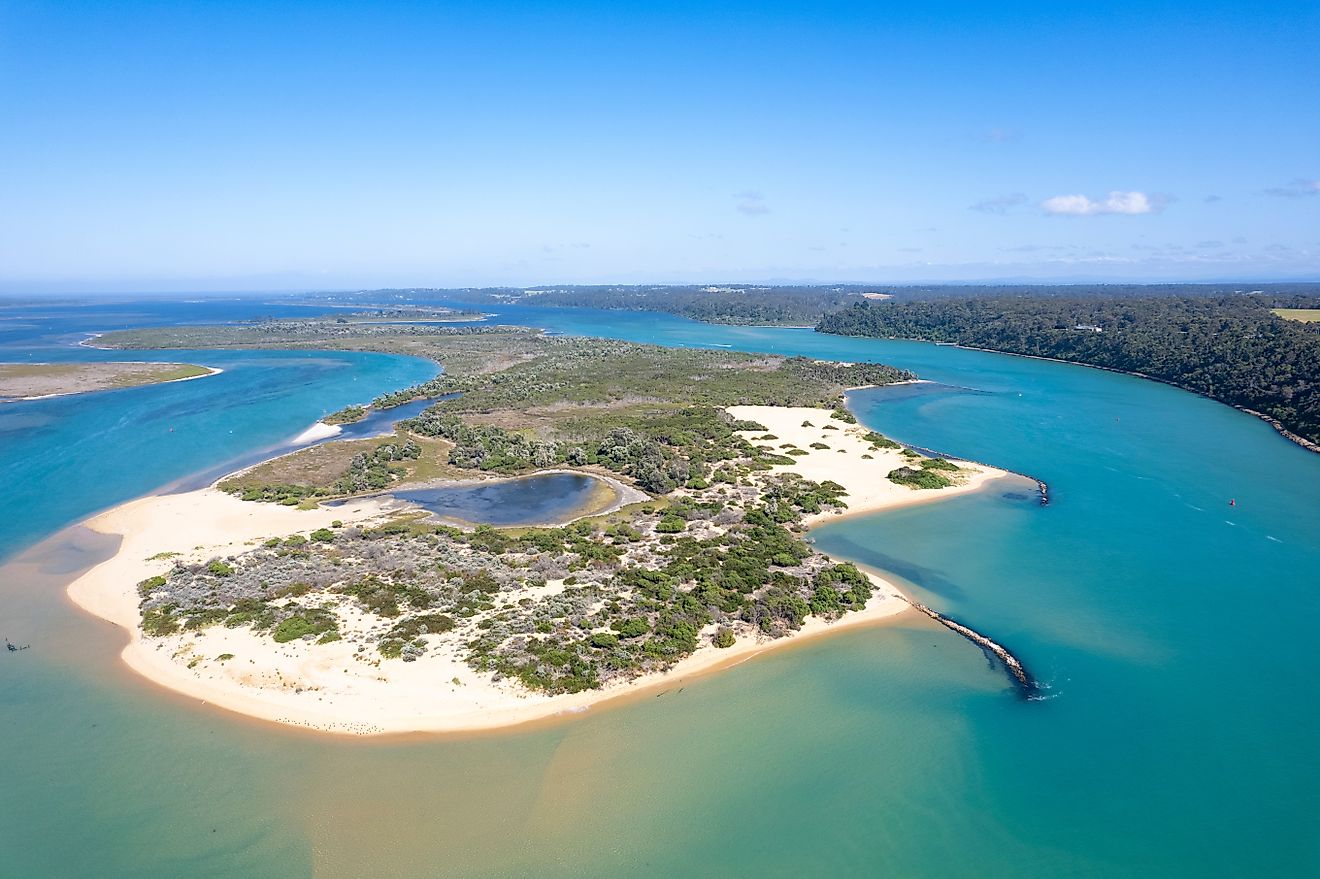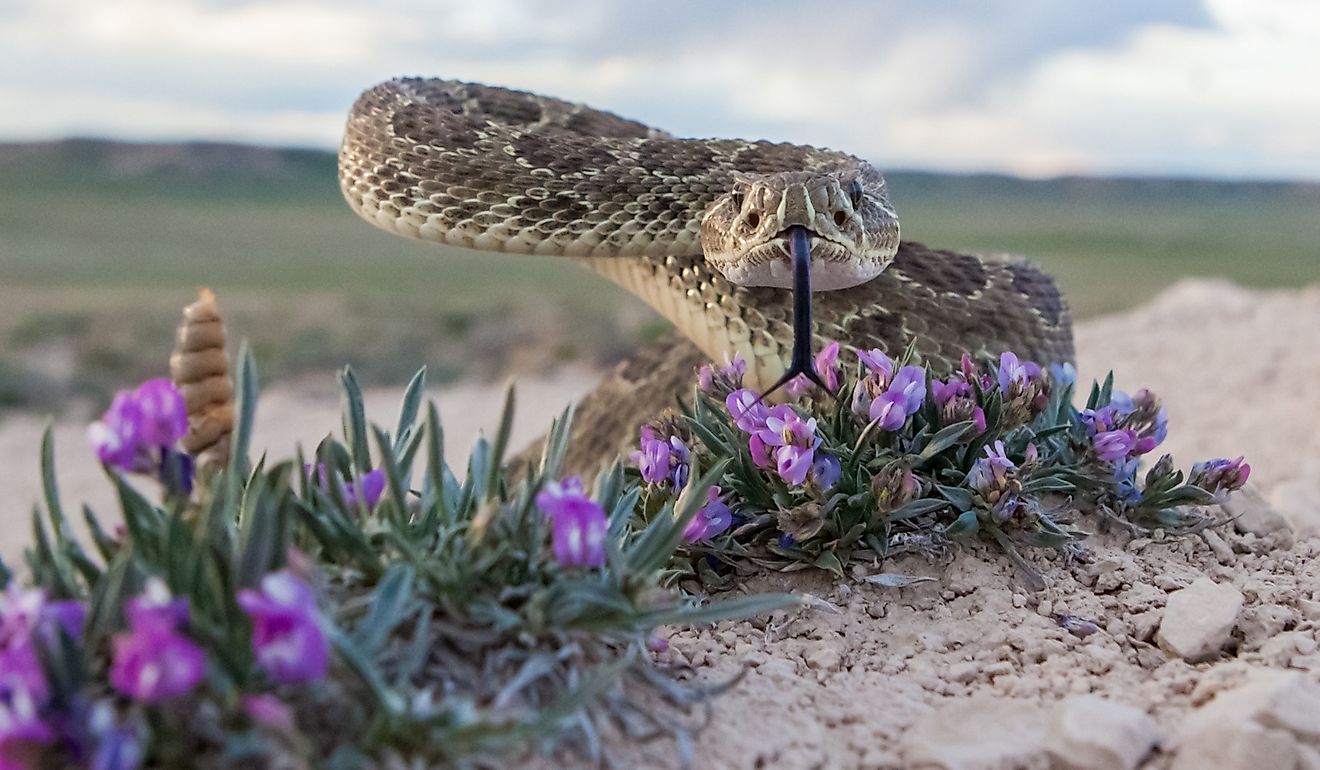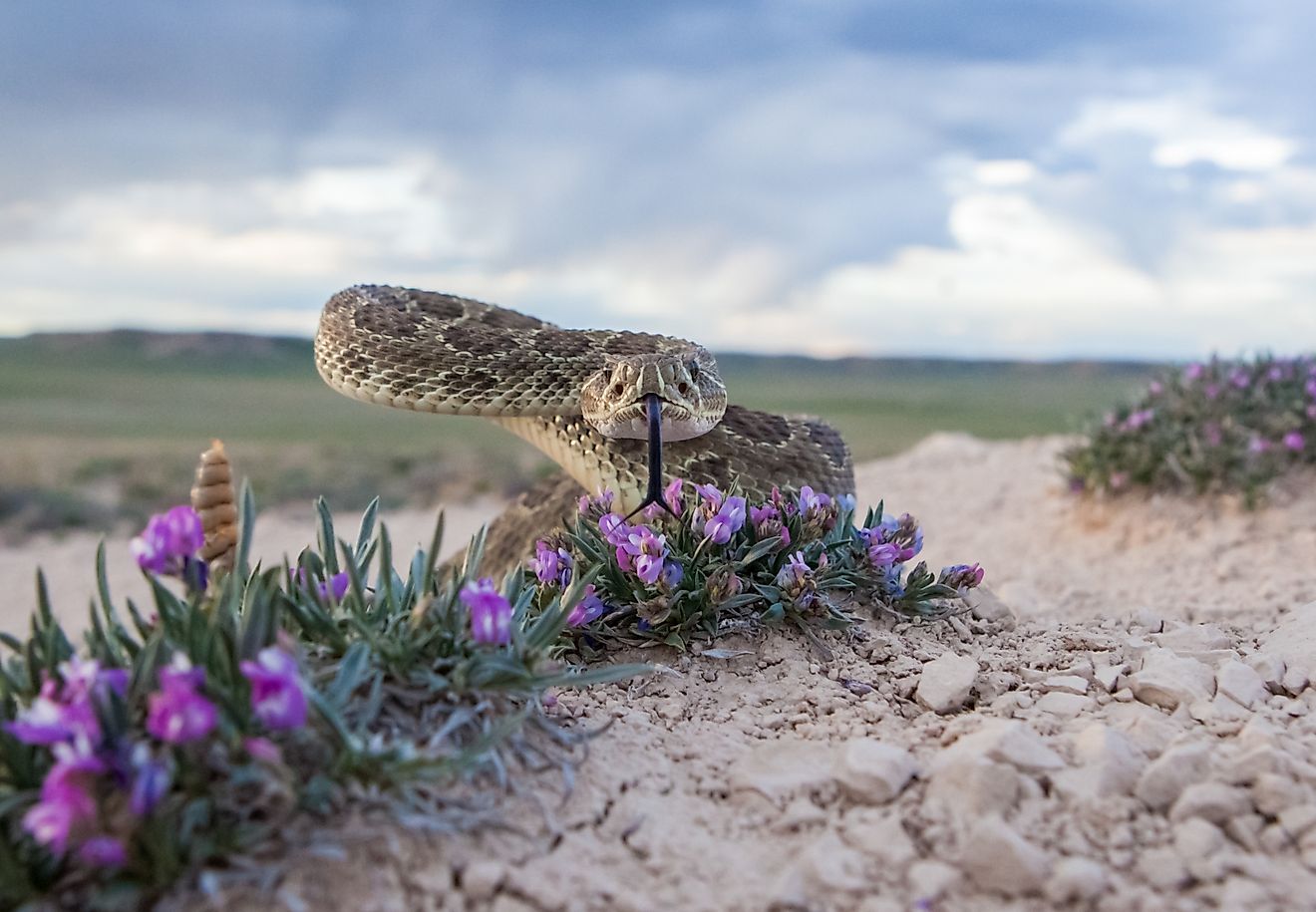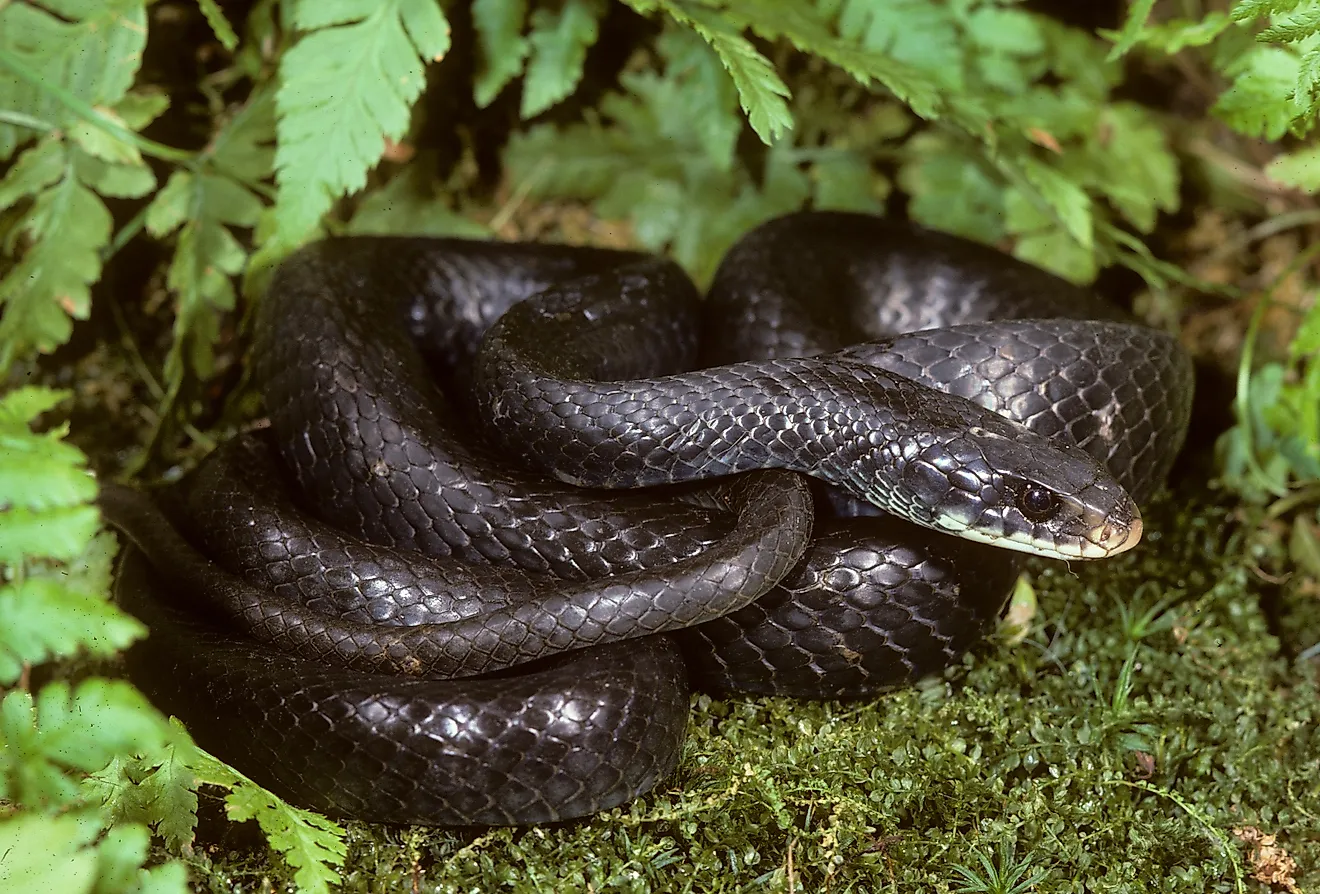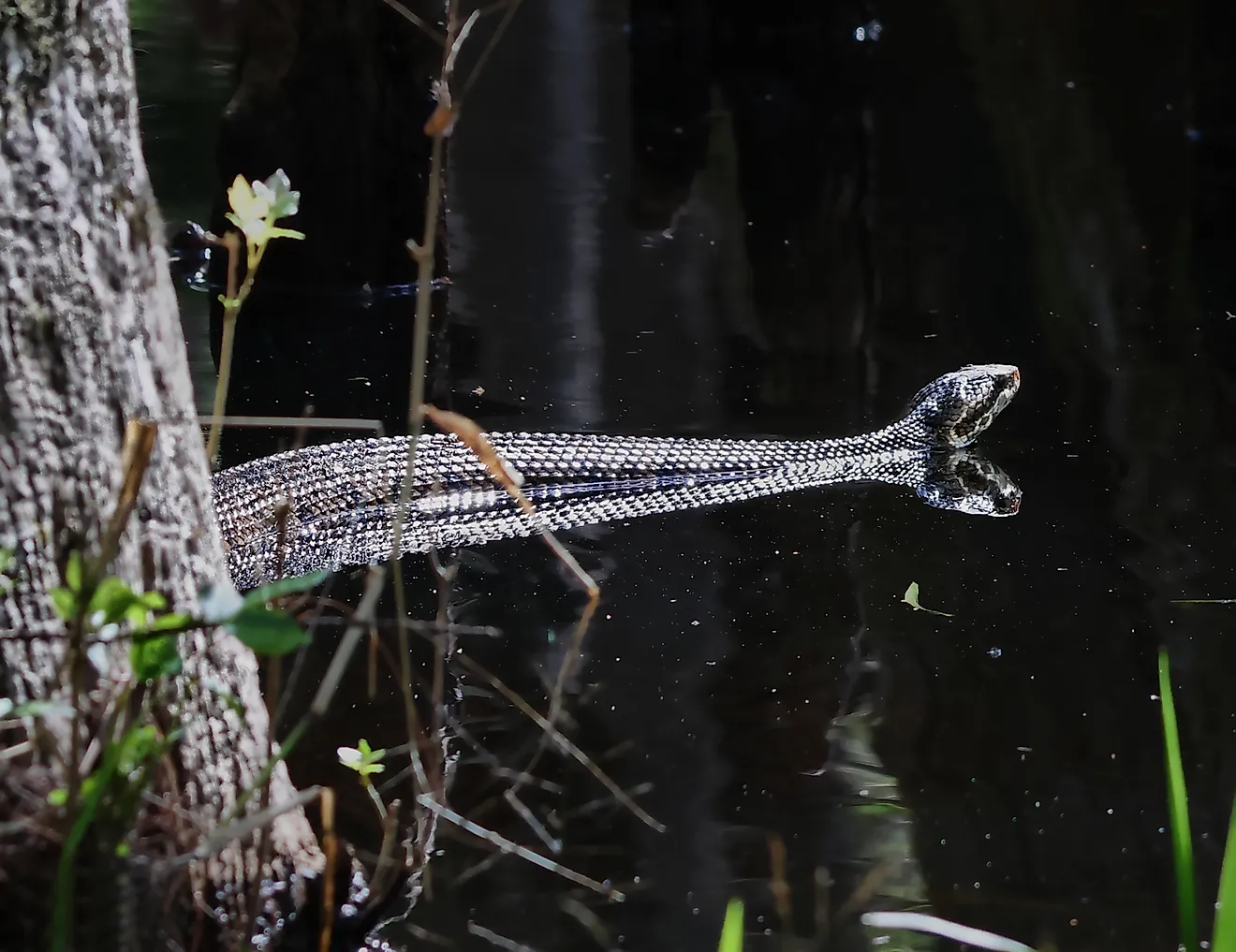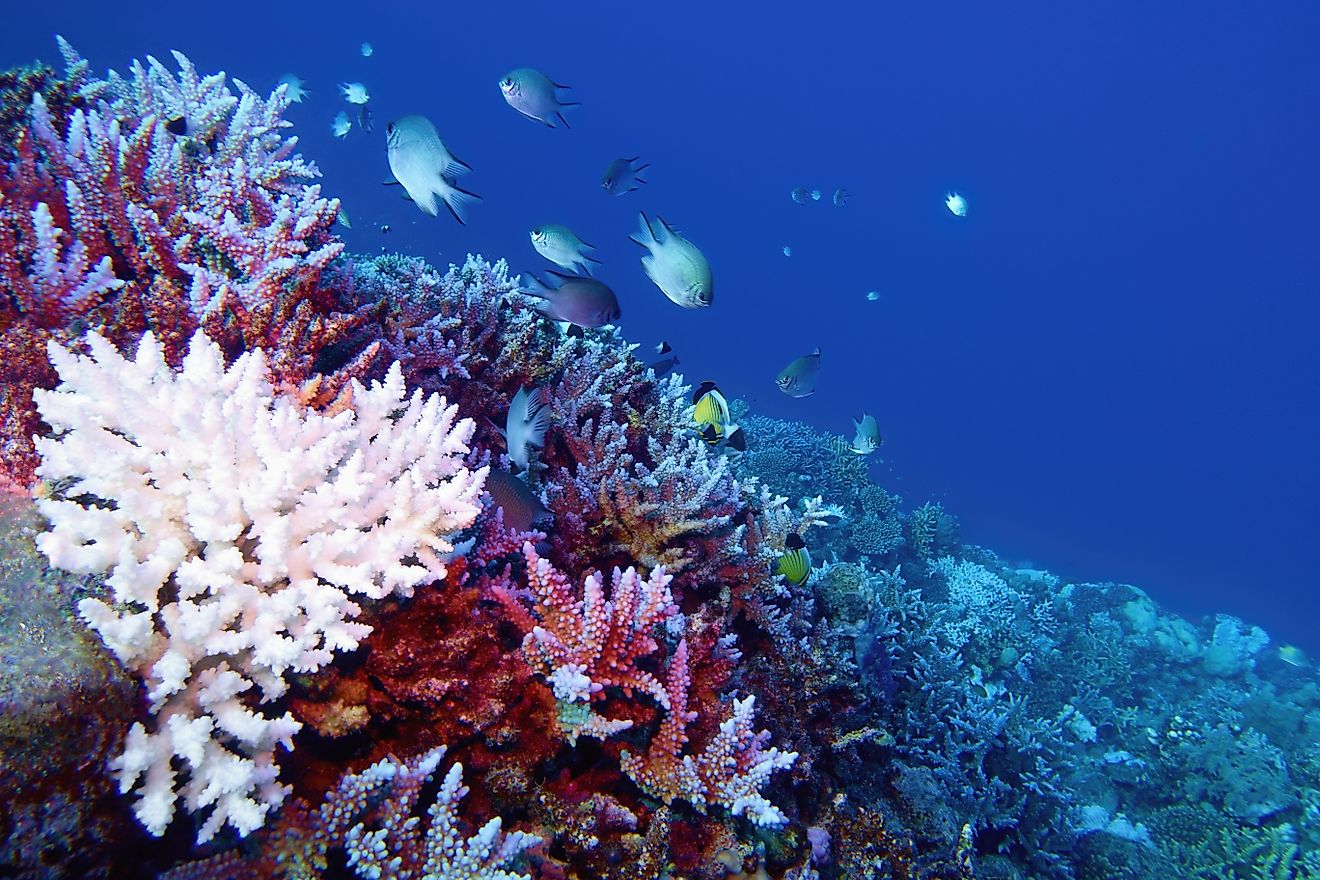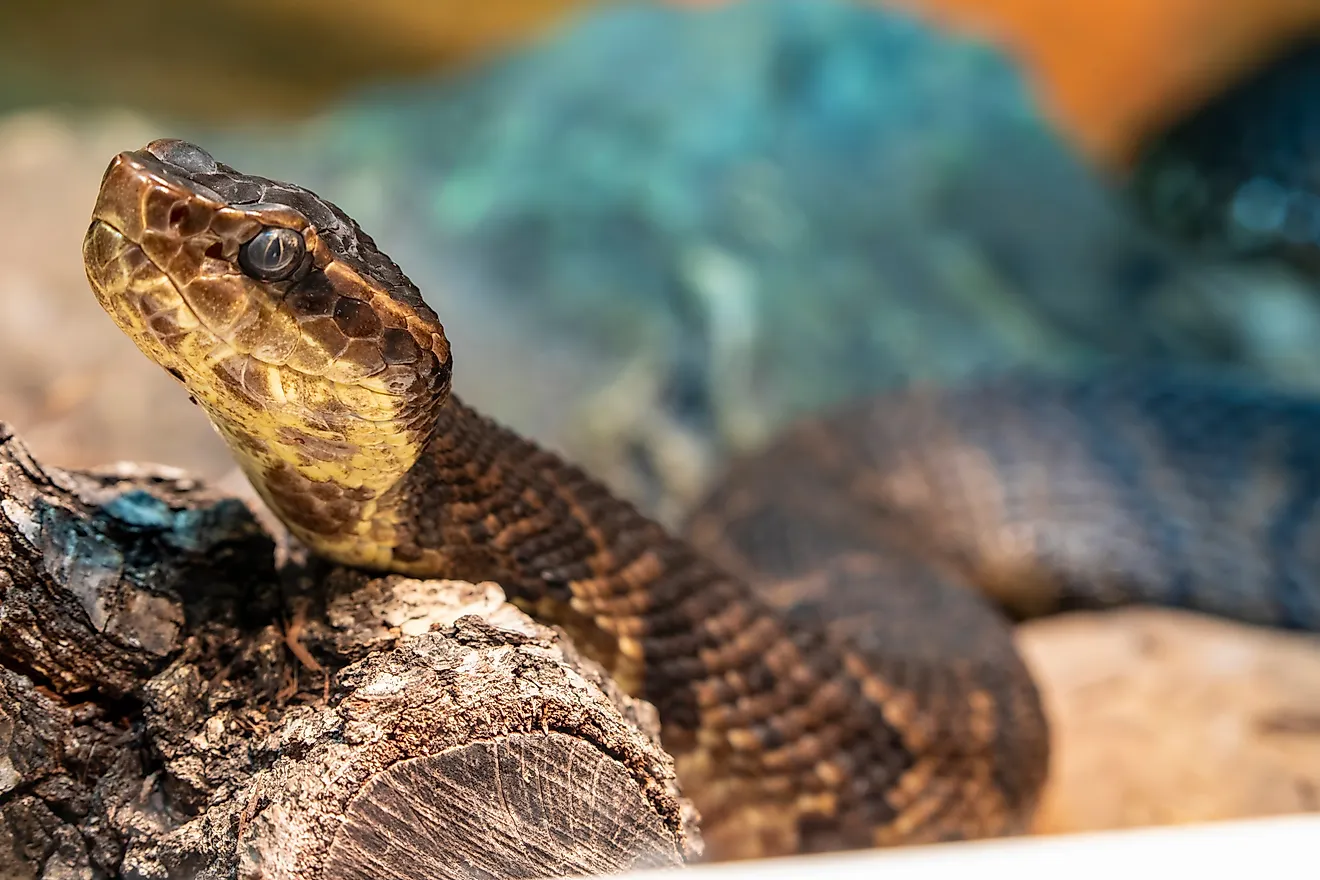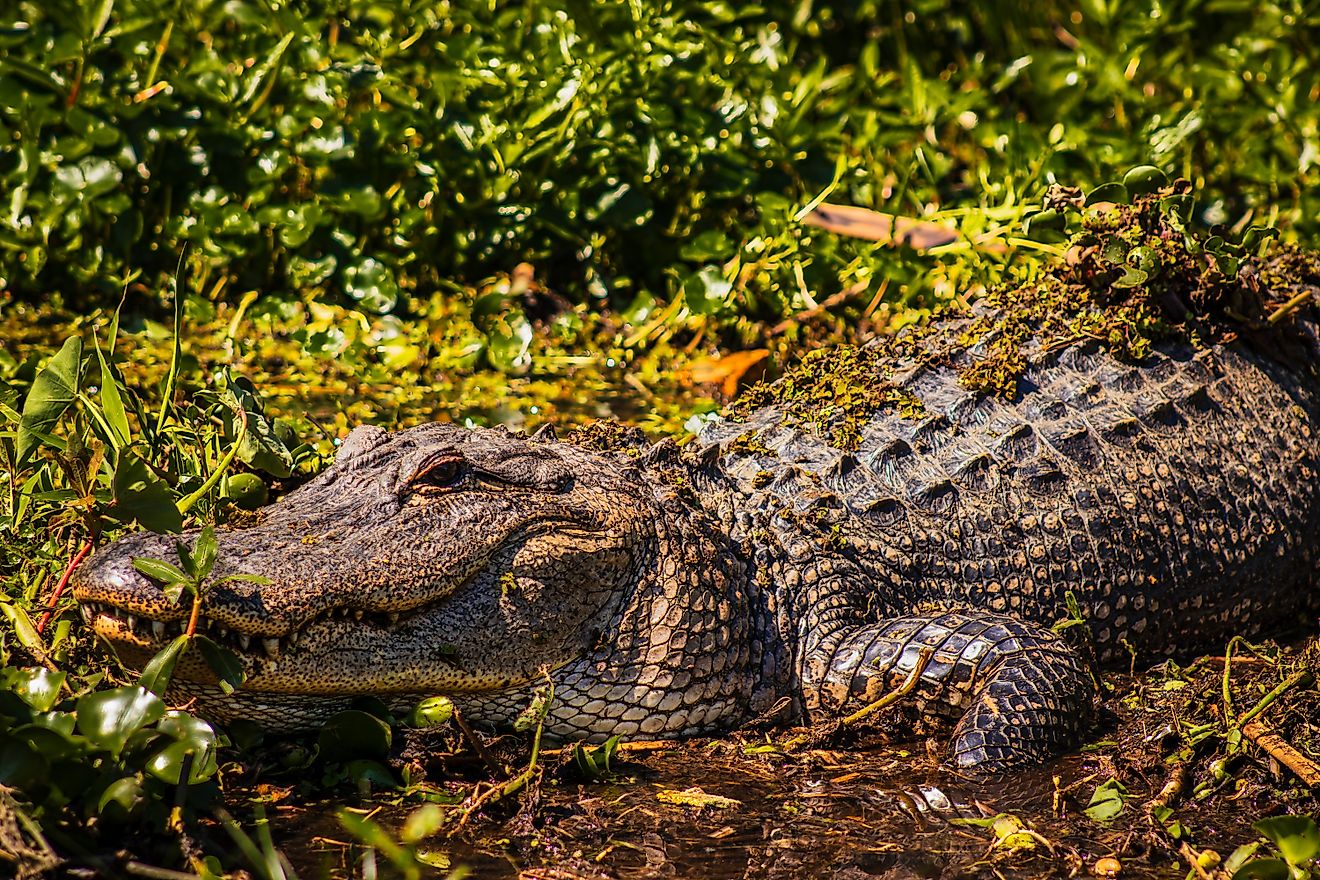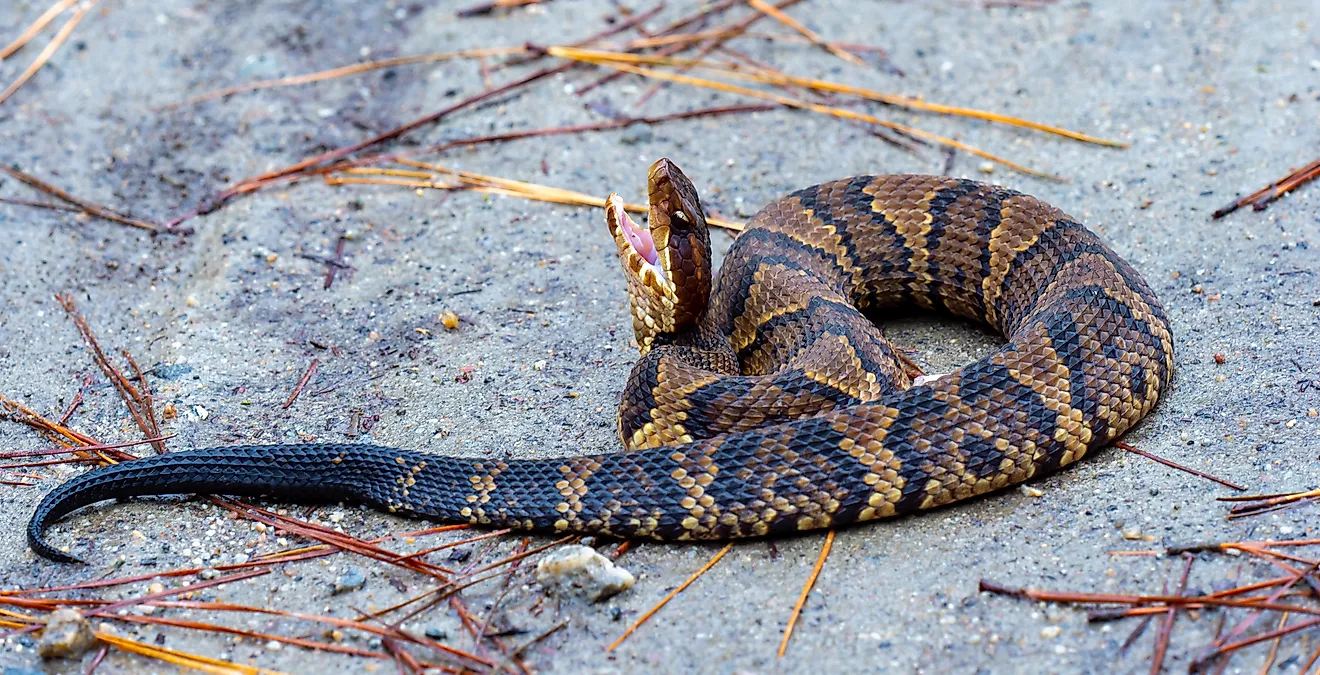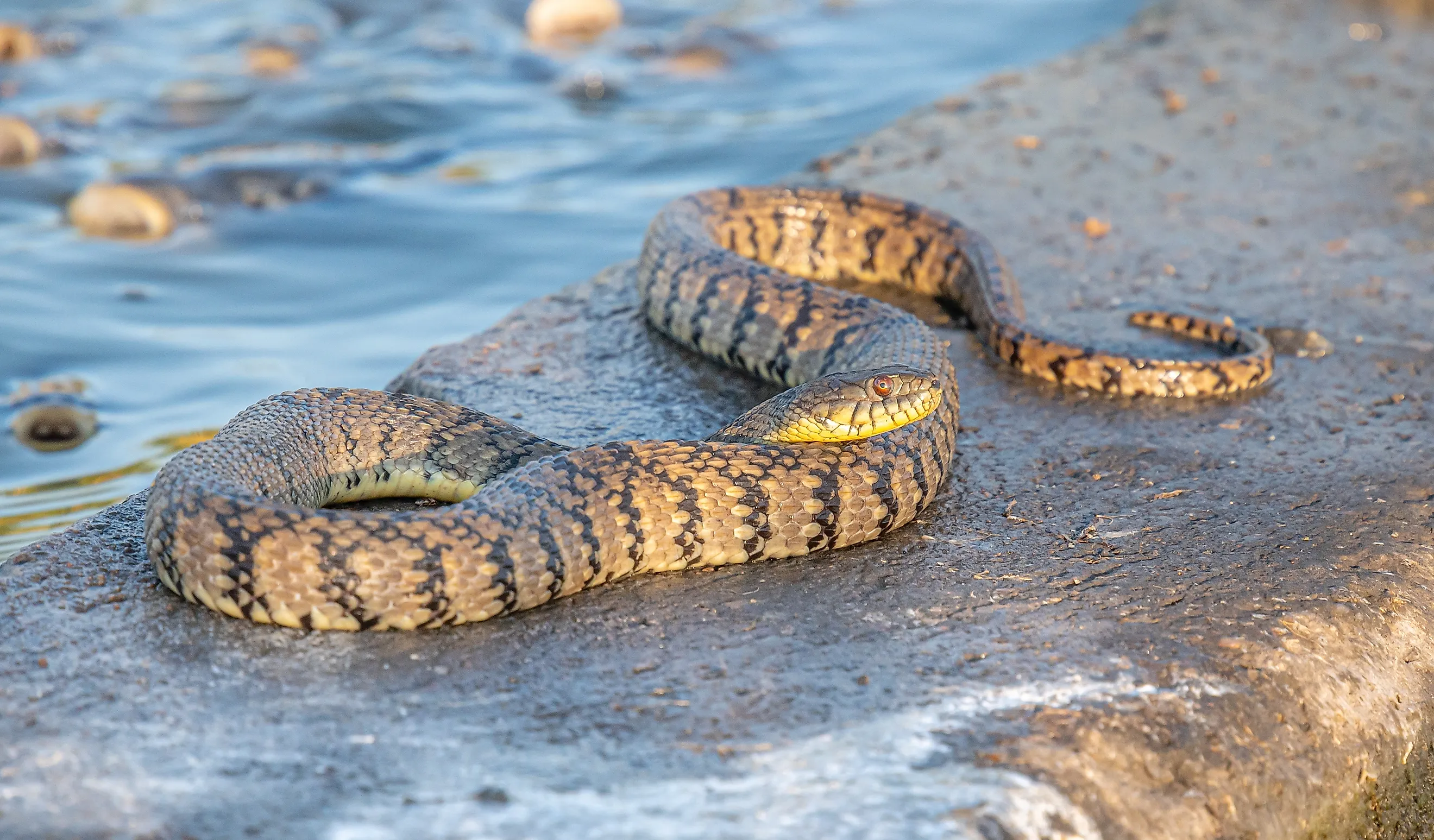
5 Most Snake-Filled Bodies Of Water In Mississippi
With such stark sibilance, the very name Mississippi conjures visions of snakes. After all, "The Magnolia State" is home to 55 native species, of which 6 are venomous. With its humid subtropical climate, abundant floodplain from the state's namesake waterway, plethora of freshwater lakes, and mixed water bodies stemming from the Gulf Coast, it is no wonder that these cold-blooded, semi-aquatic serpents have set up shop in this swampy Southern state. Let's meet some of the common characters in this part of America and find out what watery domains they're most likely to gravitate toward. These are the most snake-filled bodies of water in Mississippi.
Gulf Islands National Seashore
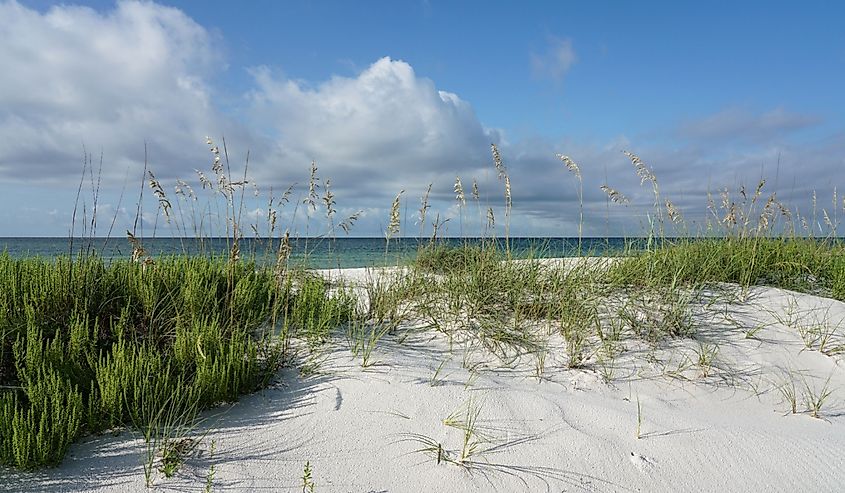
Our first snake-related destination covers a broad watery region, rather than a single site. The Gulf Islands National Seashore stretches for 160 miles along the northeast shore of the Gulf of Mexico, encompassing the nearshore barrier islands of coastal Mississippi and the Florida Panhandle. Along with the Gulf's white beaches and crystal clear waters, America's largest national seashore includes brackish estuaries, slow-moving bayous, and all sorts of bays, lagoons, and ponds - ideal environments for many of Mississippi's native snake species.
The long and slender coachwhip (Masticophis flagellum) enjoys the habitats offered by Mississippi's barrier islands, such as Cat, Ship, Horn, and Petit Bois Islands, and are particularly adept climbers, which is helpful for catching birds and other small reptiles. The eastern ribbon snake (Thamnophis sauritus sauritus), often mistaken for a common garter snake, is short, slim, and favors the wetlands, streams, and pond edges, where it can snack on frogs, tadpoles, salamanders, and fish. The venomous cottonmouth (Agkistrodon piscivorus), aka "water moccasin," spends its time swimming about the swamps, floodplains, and wetlands in search of fish, amphibians, birds, mammals, and other snakes. Two other notable snakes found around the Gulf Islands National Seashore (though usually on dry land) are the speedy but harmless black racer (Coluber constrictor) and the longest and heaviest of America's venomous snakes, the eastern diamondback rattlesnake (Crotalus adamanteus).
Enid Lake
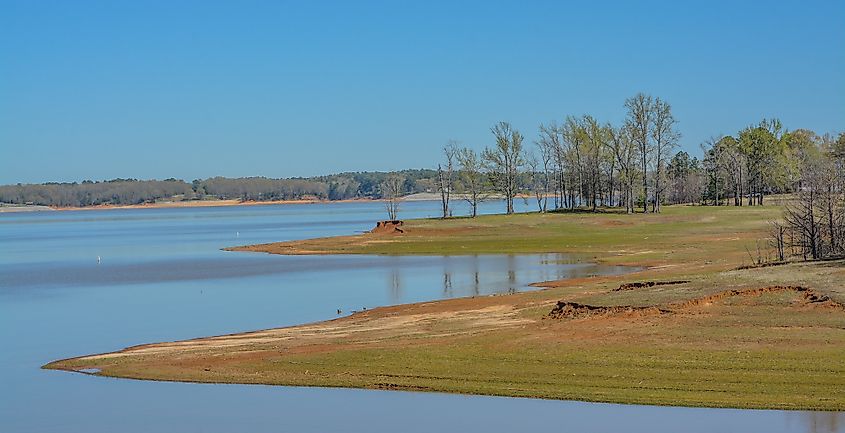
Plopped in north-central Mississippi and managed by the U.S. Army Corps of Engineers, Enid Lake offers 28,000 acres of freshwater goodness perfect for swimming, boating, and fishing. Plus, thanks to George P Cossar State Park, ten recreation areas, and the hundreds of campsites sprinkled all around its shoreline, the broader Enid Lake area is beloved for its hiking, horseback riding, hunting, and picnicking opportunities. At the same time, given the calm waters, ample surrounding green spaces, and abundant food sources, several snake species are understandably drawn to this oasis.
Enid Lake sits outside of the eastern diamondback's known territory and a bit further north of where the boldly-striped eastern coral snake (Micrurus fulvius) is known to exist. However, the aquatic and fish-eating cottonmouth can be found statewide and is perfectly suited for Enid Lake, while the copperhead (Agkistrodon contortrix), pygmy rattlesnake (Sistrurus miliarius), and canebrake rattlesnake or timber rattlesnake (Crotalus horridus) might also be spotted amongst the peripheral hardwood forest trails.
Grenada Lake
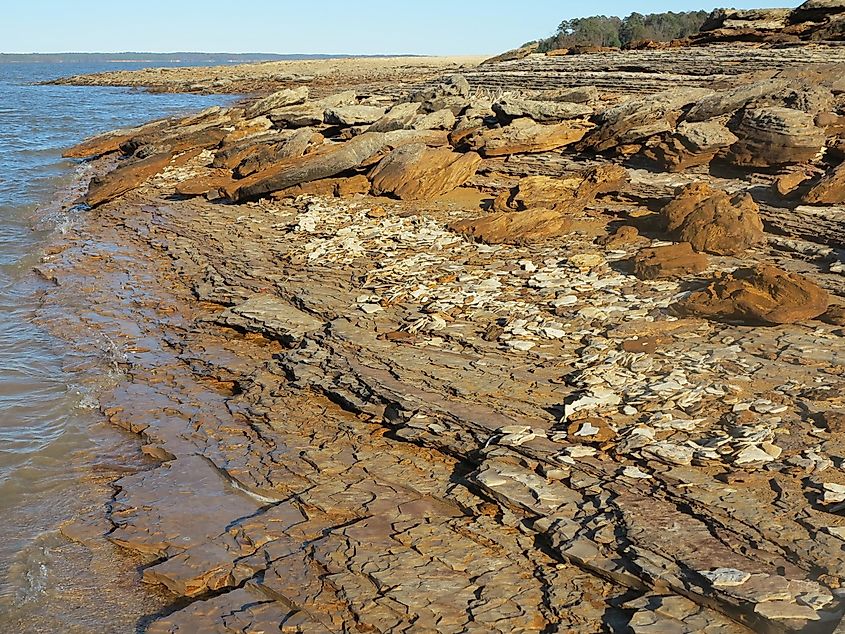
Just a short drive south of Enid Lake, at the entrance of the Mississippi Delta, the even larger Army Corps reservoir known as Grenada Lake invites a similar slew of activities and snakes as its northern neighbor. Hugh White State Park on the southwestern shore, in conjunction with various public use areas and all sorts of sporadic beaches and forest trails, once again encourages visitors to frolic in the waters, lace up their hiking shoes, bust out their fishing rods, bird-watching binoculars, or even golf clubs, pitch a tent, park a trailer, lay out a picnic, or just about anything else you can think to do with those extended Mississippi summers. Grenada Lake also has an impressive visitor center, complete with a theatre and informative exhibits, where you can ask about the region's activities and inquire about what snakes you might encounter during your stay.
Grenada Lake still sits well beyond the eastern diamondback's known habitat, but it does creep slightly closer into the eastern coral snake's area of occupation. There are cheeky rhymes to help distinguish this colorful venomous snake from its harmless impostors but, if you do see black, yellow, and red stripes, your best bet is simply to steer clear.
While you still run the risk of an encounter with the same venomous snakes here as at Enid Lake, let's turn our attention to a non-venomous aquatic serpent that is likely to swim by at either reservoir: the diamond-backed watersnake (Nerodia rhombifer). With a stout, olive-green and barred body that reaches four to five feet in length, as well as its insatiable appetite for fish, the diamond-backed watersnake is often mistaken for the cottonmouth. Hopefully you are never confronted with a strike from either species but, if so, the unmistakable white interior of the cottonmouth's mouth is a dead give-away as to who is who.
Sardis Lake
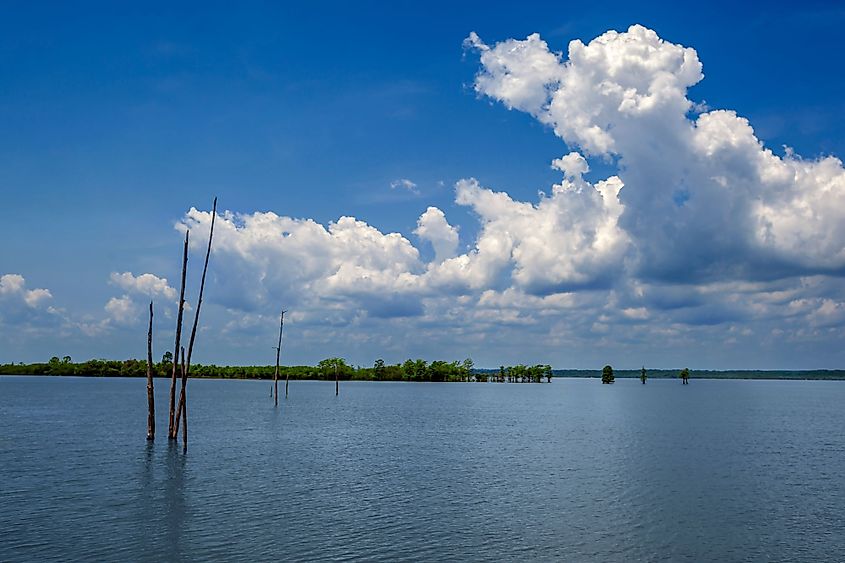
North of Enid Lake, we find yet another of northern Mississippi's flood control reservoirs that has evolved into an outdoor recreation haven over the past century. At 98,000 acres, Sardis Lake is by far the largest of this reservoir trifecta. As with both Enid and Grenada, Sardis has an accompanying state park (in this case, John W Kyle State Park, which is sandwiched between the southwest shore and Lower Lake) and more day-use areas, wildlife management areas, beaches, and campgrounds than you can shake a stick at - not to mention the boat ramps and marina. Cottonmouths and diamond-backed watersnakes are expected in these parts, and owing to the copious amounts of shoreline woods, the timber rattlesnake is likely to be hiding nearby.
Pickwick Lake
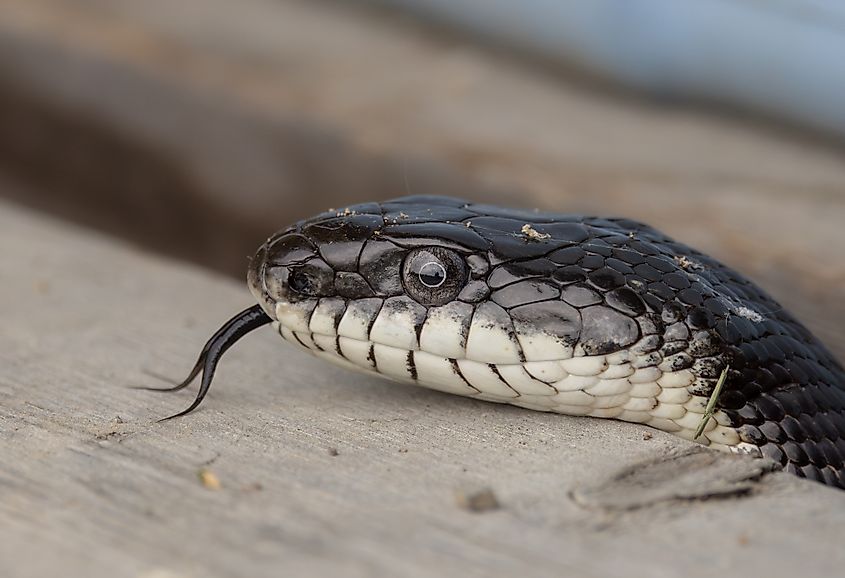
Pickwick Lake spans three states and is fed by the Tennessee River. Stretching nearly 53 miles from southwestern Tennessee through to northwestern Alabama, it is Mississippi's northeastern section that interests us today. The local recreational focal point for this water body is J P Coleman State Park, a well-wooded haven for boating, camping, and fishing, with bass, crappie, and catfish being the prime catches. Visitors have reported sightings and even posted pictures of copperheads and diamond-backed watersnakes, as well as one of the most commonly-seen of Mississippi's snakes and a new addition to our snake watch-list: the gray ratsnake (Pantherophis spiloides).
Gray ratsnakes, despite their name, can actually vary quite a bit in coloration, especially as they age. But whether an individual is gray, brown, yellow, or green, it is likely to have a row of dark blotches along its long, slender back. While they prefer forests, grasslands, and agricultural areas, they are also known to roam near bodies of water. In addition to another common serpent, the eastern garter snake (Thamnophis sirtalis sirtalis), be advised that Pickwick Lake is also known to be pygmy rattlesnake, timber rattlesnake, and cottonmouth domain.
A Bit Of Parting Perspective
Though we have covered a wide variety of snakes, including six venomous species, it is important to contextualize the danger (or frankly, lack thereof). Yes, during the heat of the summer when we all want to spring for the nearest lake, you might see a snake, but your odds of being bitten are low. In fact, with a state population of nearly 3 million and somewhere between 100 to 200 reported snake bites per year, there's less than a 0.01% chance of being an unlucky victim. With a bit of mindfulness and respect for all wildlife, there's no reason why your time at the lake can't be a safe and happy affair.
